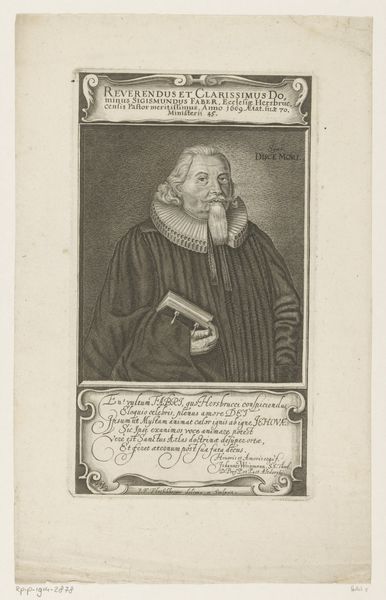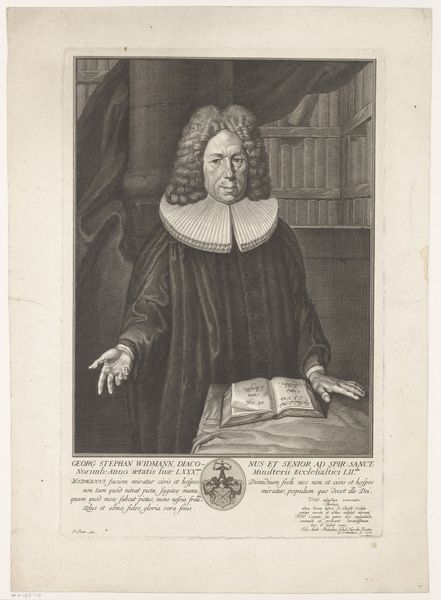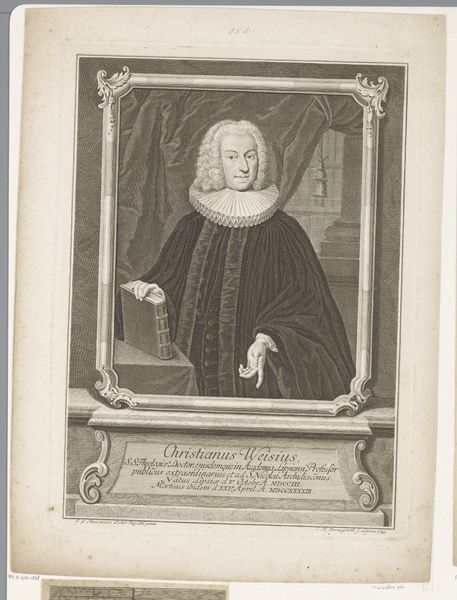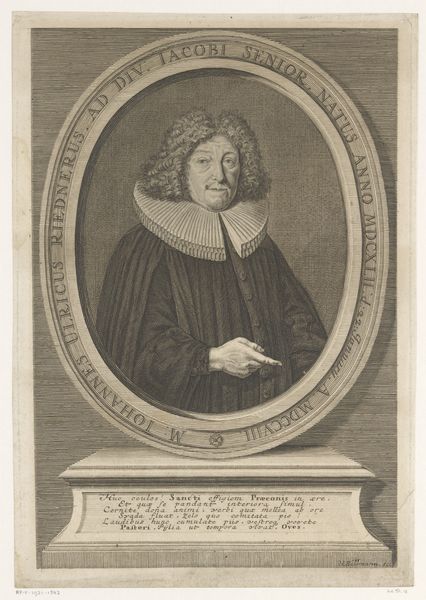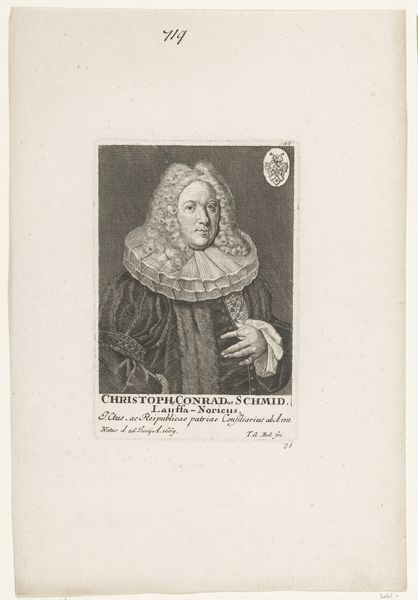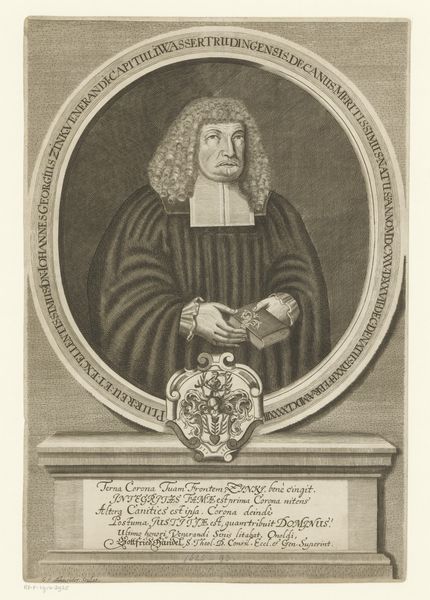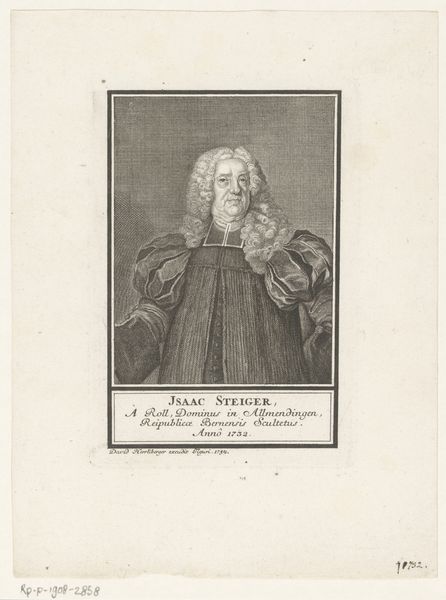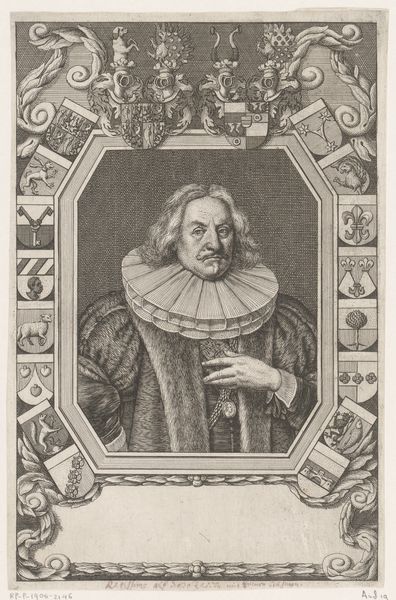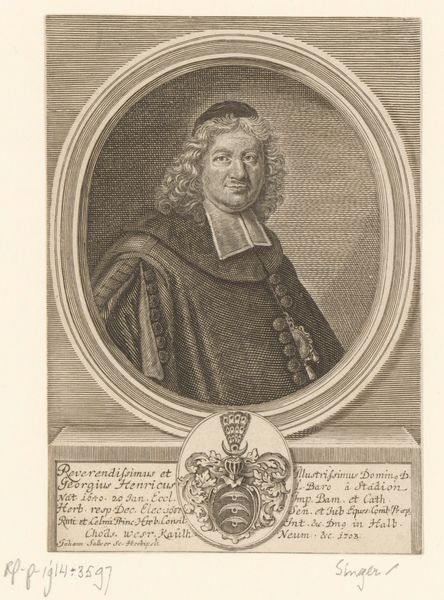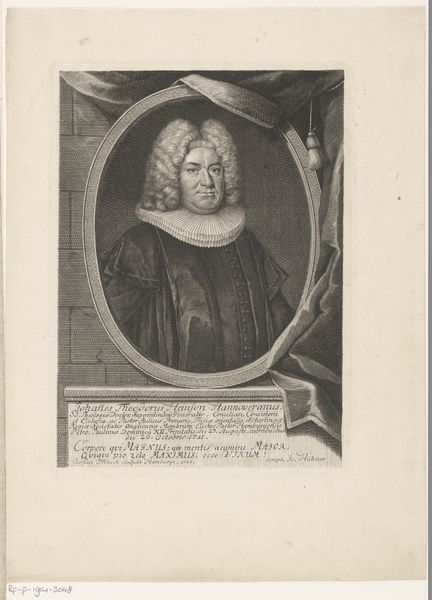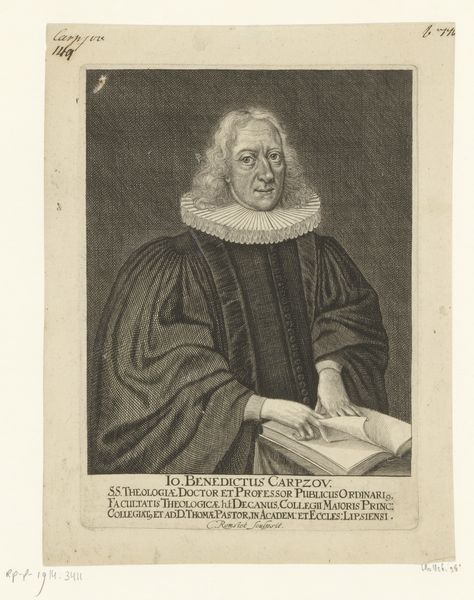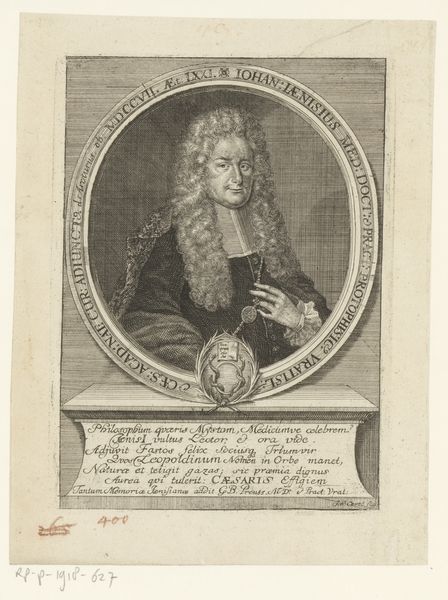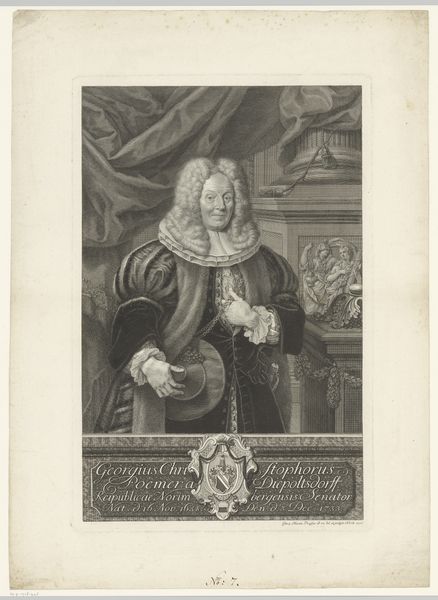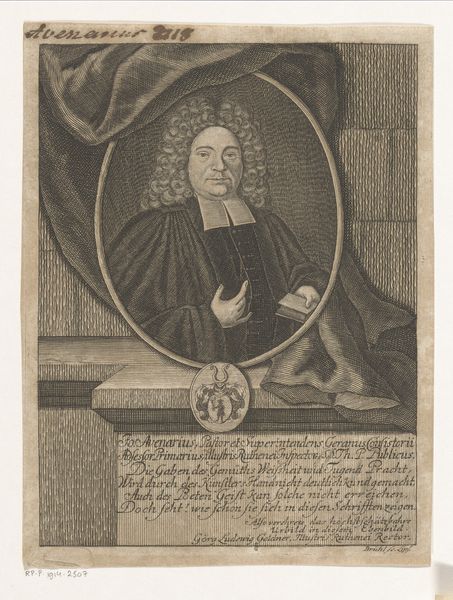
print, engraving
#
portrait
#
baroque
# print
#
old engraving style
#
engraving
Dimensions: height 205 mm, width 123 mm
Copyright: Rijks Museum: Open Domain
Editor: So, this engraving, "Portret van Johann Nürnberg" by Johann Alexander Böner, was made in 1667 and it’s held at the Rijksmuseum. I'm struck by the formality, and also by the presence of the text below the figure... it seems crucial to understanding the print. What jumps out at you when you see this, from a historical perspective? Curator: The first thing I notice is how this image functions within a larger system of civic representation. Here, we see Nürnberg as a member of the city council, a figure whose likeness is being circulated publicly through print. The text below reinforces this, functioning almost as a legitimizing caption within a formalized institutional context. The style itself, typical of Baroque portraiture, emphasizes the sitter's status through costume, pose and symbolic attributes. Consider how the institution *itself* of city government creates a context for images like this, giving meaning and weight to this person's depiction. What do you think the artist is trying to say? Editor: That his likeness and his name are important for the function of government? Curator: Precisely. It's about making civic leadership visible and giving it a tangible form, promoting a certain vision of order and authority within Nürnberg's society. And engravings are crucial, given the technology of the time, to achieve visibility. Editor: So, it's less about his personal story and more about his function in a larger civic narrative? Curator: Exactly. The personal is almost entirely subsumed by the public role. Which isn’t necessarily saying he *didn’t* commission the portrait to memorialize himself… simply that it operates inside of a political framework. I keep wondering… how many copies of this print circulated around Nuremberg? Editor: This makes me see portraiture of this era very differently. It seems portraits weren't just records but instruments of governance. Curator: Yes, visibility, authority, permanence – it's all part of the same political language, expressed through the image and its reproduction. Thank you for making me see a more powerful angle in that artwork.
Comments
No comments
Be the first to comment and join the conversation on the ultimate creative platform.
